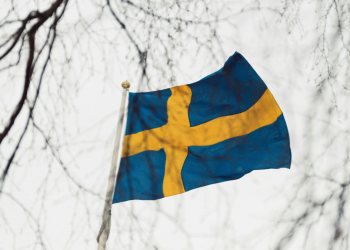There is now a category of people, socially identifiable, who are already the subject of sociological and psychological studies and who recognize themselves in the appellative “childfree“. Free, because they don’t have children and don’t even want them based on a consciously made choice; and not because of a physiological impossibility or for reasons linked to their circumstances.
They are “free” because children cause stress, are terrible vehicles of contagion, are responsible for the lack of work for women, and even cause climate change. Therefore, adults who are sufficiently aware to be able to recognize such obvious truths should be able to understand that it is necessary to avoid the presence of children in pizzerias, on cruises, in hotels and so on and so forth.
Is it immoral to procreate in the age of climate change?
Having children, by the way, is a choice that is by no means morally neutral, as evidenced by the increasingly pressing questions posed by several American newspapers: “The Case Against Kids“, The New Yorker (2012); “Should We Be Having Kids in the Age of Climate Change?“, NPR (2016), “We need to talk about the ethics of having children in a warming world“, Vox (2019).
While the debate is open, the ecofeminists–despite the fact that they themselves are already mothers–find nothing better than micro-doses of psychedelic mushrooms to support the anxieties of motherhood. They, being still “in time” to avoid disaster (if not at a planetary level, then at least at a personal one), have decided to avert the danger at its origin, thus giving us a break. Or, rather, they have opted for three small incisions–two near the abdomen and one just above the navel–enabling a surgeon to insert a camera and thus remove the fallopian tubes; effectively sterilizing the patient definitively and irreversibly.
Stories of ordinary mutilations
This is not some Halloween horror flick, but the naked and raw story of self-inflicted mutilation which more and more young women are willing to undergo in order to have the certainty of a childless life. Scrolling through the individual testimonies, we can encounter extremely significant details: Diamond, a 31-year-old tik-toker, a self-described “poster child of sterilization”, has always “thought she wouldn’t have a family of her own […], a therapist she found online a few months after graduation made her realize that being spanked as a child was deeply traumatic for her and that it made her fear authority figures like her father. She decided that she would never want to become an authority figure herself. Never, ever.” That’s why she had her tubes removed, recounting her experience to her 64,000 followers.
Isabel, 28, a self-proclaimed anti-natalist, states that it is “morally wrong to bring a child into the world. […] No matter how good you are, it will still suffer.” She would have liked to wait until she was 31 to undergo the bilateral laparoscopic salpingectomy–required for sterilization–but “with the Heartbeat Bill in place” (Isabel lives in Texas). She states, “I can’t take the risk of getting pregnant and not being able to abort.” Preparations are already underway for the “sterilization celebration”: a feast with sushi and alcohol, and an expression of jubilation for the opportunity not to “waste” one’s life.
Like her, Darlene Nickell, 31 years old–it seems that the turning point of thirty is somehow significant for the “radical childfree” decision–has been trying to have her tubes removed for ten years. It seems it is not easy to get a favorable opinion from the doctor for such interventions, given “the high rate of second thoughts.” But the young people interviewed don’t seem to care about this hypothesis. Chelsea, 25, from Sacramento, while saying that “children disgust her”, adds that the only risks she is evaluating about the surgery are the possibility of infections or mood swings caused by anesthesia. She asks, “What would I have to regret? That I will be too happy? Too free?”
Sophia, a 19-year-old communications student, finds it much more efficient to undergo sterilization than to engage in any “temporary” contraceptive practice: “I’ll do this invasive thing once, rest for a few days, and never think about it again.” Sophia has never had any emotional or even sexual experience, but she doesn’t worry about possible second thoughts. “There’s no point in regretting what you can’t change,” she says, and is content to call the hypothesis of a future partner who wants children a “puzzle”. On the other hand, she bristles when the interviewer asks her what she has in mind for her future: “It’s kind of hard to ask someone who’s nineteen and not finished college what they want their life to be like.” The important thing is to get the certainty of “freedom”. What she will do with it is a problem she will tackle later.
Inseparable companions: individualism and fear
What do these women and their stories, have in common? Above all, two elements.
First, fear. And the respondents’ fears are significant in their details: “fear of pregnancy, fear of authority, fear of pre-eclampsia (a pregnancy disorder that can bring undesirable outcomes for mother and baby), and fear of postpartum depression.” Even fear of racism, as Diamond, a white woman with a black partner, says: “I wouldn’t be able to say ‘I understand’ if [the child] came home from school and was bullied because of their hair or skin color”. It makes you wonder how young people who are so frightened are able to face life on a daily basis. Mind you, we’re not talking about them having to face any apocalyptic or tragic scenarios, but how they behave in the face of simple everyday circumstances, absolutely similar to those they will have to face even without having generated children. Physical discomfort, illness, disappointment, humiliation. Having children may increase the likelihood of such experiences, but eliminating children from your future certainly does not protect you from any kind of hardship in life. What other walls will they have to erect, what other limitations will they have to impose on themselves, what other amputations will they find “more efficient” in order to feel “safe” within a life devoid of any certainty?
The second element is an individualistic outcome of a utilitarian-style morality. In fact, the adherence of these young people to an ethical principle whereby “your freedom ends where mine begins” and “the good coincides with the maximization of profit–identified in pleasure, satisfaction of preference or the like–for the greatest number of sensitive individuals” seems to be taken for granted and not even up for debate. If freedom is an unlimited license to act in the private sphere, accompanied by very rigid schemes of public behavior to avoid any “offense” against third parties, and if the purpose of action is always evaluated according to its consequences in terms of “welfare” for most, then individualism is the most obvious and, indeed, the reasonable outcome. In fact, the fewer individuals involved in the outcomes of their actions, the more it will be possible to indulge in any momentary impulse, without having to take into account the reverberations on others. Who is it that should limit the license to choose to do whatever comes to one’s mind, more than a fragile and needy individual, towards whom we recognize multiple duties of responsibility and care?
Finally, sterile. And after that?
To physiologically eradicate (with surgical precision) even the remotest possibility of binding oneself inexorably to the needs and necessities of another human being seems a reassuring prospect, when there is no longer any hope of a real good. There remains the problem of how to “spend your time”, free from the burden of pregnancy and parenthood. Diamond and her partner solved it by adopting Rue, an anemic pit bull “with special needs”. Their tiny home, filled with Star Wars action figures, is overrun with the animal’s accessories and toys which are used to overcome the trauma of “being bred to fight.” Rue is afraid of other dogs, and for the couple the dog is–Diamond’s words–”a big f—ing job.”
Rather a dog than a child, though.




















Discussion about this post